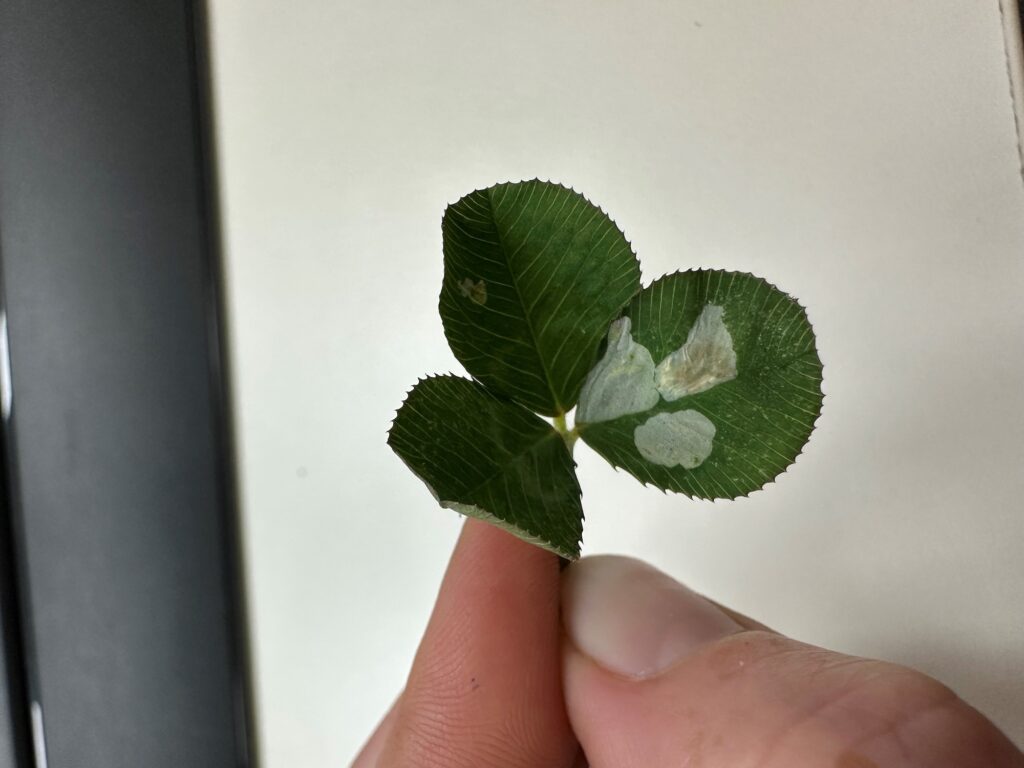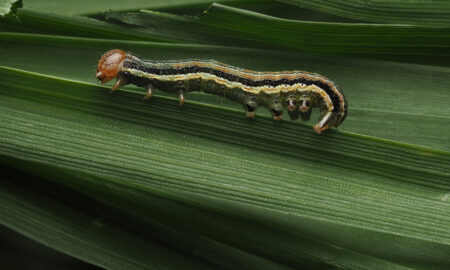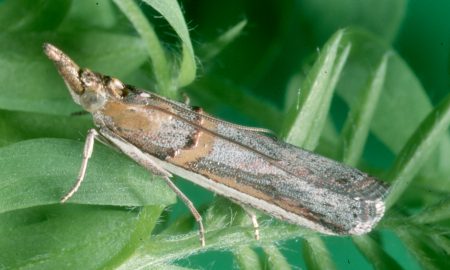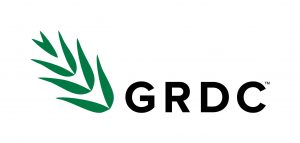Key takeaway: An exotic moth that feeds on white clover, Porphyrosela minuta, has been found in NSW. It causes distinctive white blotch mines on leaves but is not considered a significant pest.
A new leafmining moth in clover
An exotic leafmining moth, Porphyrosela minuta, has been detected feeding on white clover plants in New South Wales.
Thought to be native to South America, the larvae of this exotic moth species were first identified in March in Coramba, NSW, through the NSW DPIRD Plant Health Diagnostic Service.
Since the initial detection, entomologists at NSW DPI have been working to document and publish details on its biology and detection in NSW (Britton and Robinson, in prep.).
The species is now thought to be widespread in NSW, with additional detections across NSW in Coolah, Wollongong and Peats Ridge.
Atypical mining symptoms reported
The larvae of leafmining insects, such as the serpentine leaf miner (Liriomyza huidobrensis) burrow between the upper and lower layers of leaves, creating winding, squiggly trails. These light green to white markings are a giveaway of their activity.
However, the mines created by Porphyrosela minuta larvae in clover stands out from the usual squiggly tunnels we associate with many leafmining flies. Rather than tunnels, they form white blotches. One agronomist described the damage they saw in field as white, silky sacs on the upper leaf surface, with larvae visible inside.

Minor pest status anticipated
Fortunately, Porphyrosela minuta is not regarded as a significant agricultural pest, and there are no reports of widespread damage.
A study on its biology and morphology in Uruguay noted:
“Although it is a common species and sometimes relatively abundant, the damage it causes is not important”
(Bentancourt & Scatoni 2007).
The only known host of Porphyrosela minuta is white clover (Trifolium repens).
But if your experience with this species suggests otherwise, please let us know; your observations could help build a clearer picture of its behaviour in Australia.
Submitting samples
Species-level identification of leafminer larvae is not possible in the field; accurate identification requires molecular diagnostics.
It is likely that plant symptoms will be more noticeable than the moths themselves, which are extremely small (2.7 mm in length) and are reportedly rarely seen (Bentancourt & Scatoni 2007).
Porphyrosela minuta is not notifiable in NSW. However, if you suspect you have found it and wish to have a sample identified, please contact NSW DPIRD Plant Health Diagnostic Services.
Submitting samples will help NSW DPI entomologists further study this species.
If you are in another state or territory and suspect Porphyrosela minuta, please contact the Exotic Plant Pest Hotline on 1800 084 881.
Acknowledgements
Thanks to Paige Tilsey (Delta Agribusiness) for providing field observations.
Thanks also to Drs David Britton and Louise Rossiter, both NSW DPIRD for providing information on recent detections.
References
Bentancourt, CM & Scatoni, IB 2007, ‘Morphology and biology of Porphyrosela minuta Clarke 1953 (Lepidoptera: Gracillariidae, Lithocolletinae) in Uruguay’, Neotropical Entomology, vol. 36, no. 4, pp. 514–519, https://doi.org/10.1590/S1519-566X2007000400005





